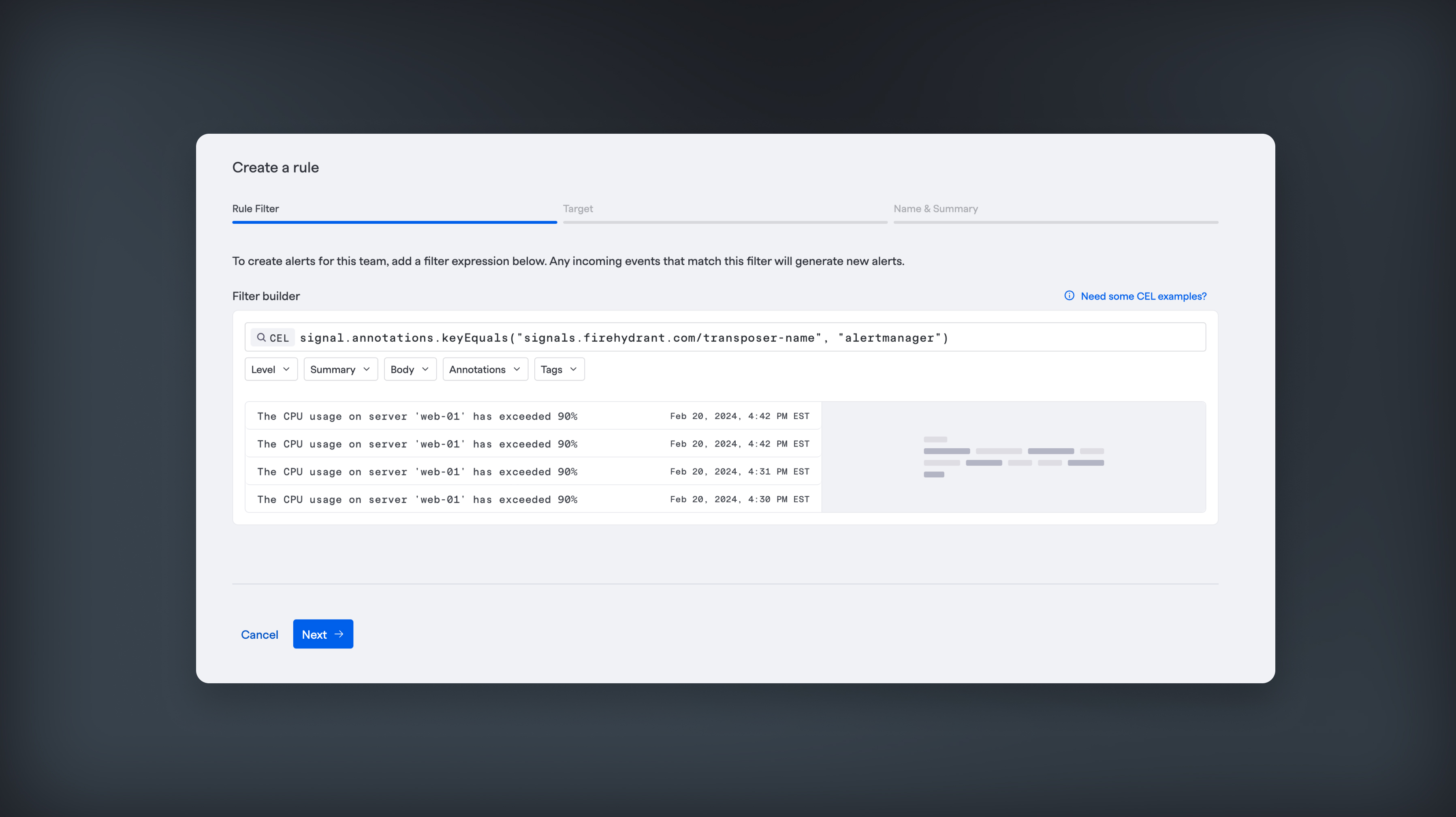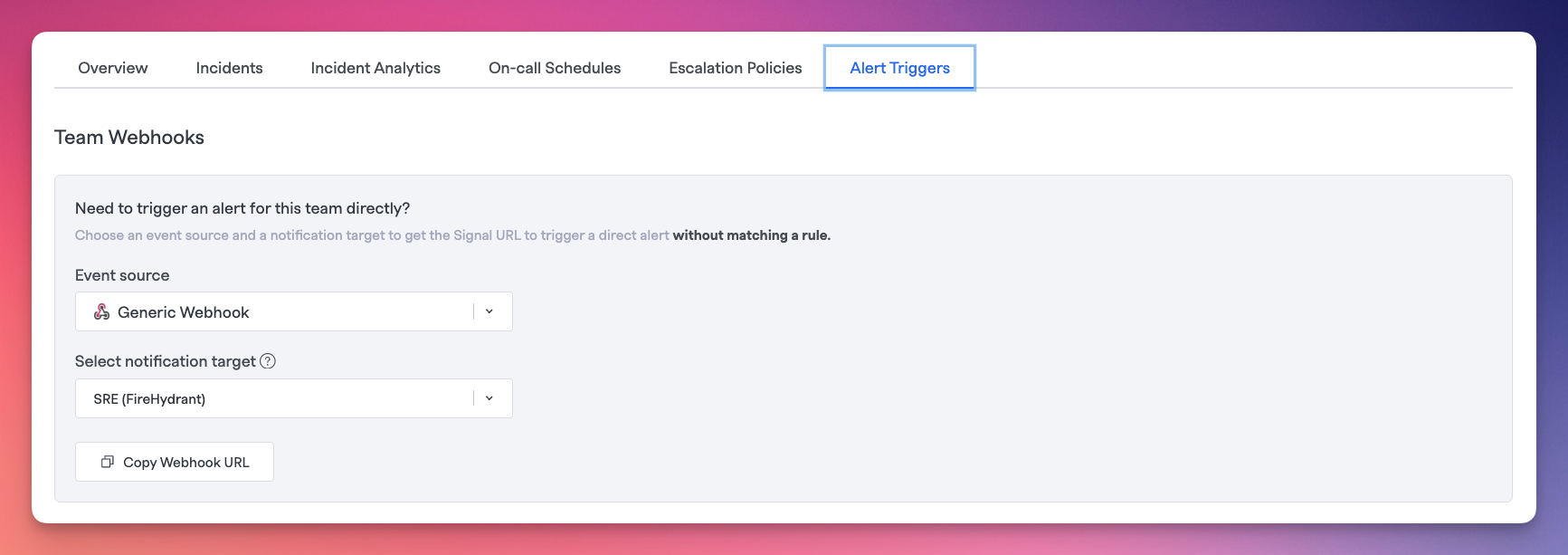Alert Rules
Alert rules, also called alert triggers, allow you to fine-tune the alerts created for your team. When events are sent to FireHydrant, they must match an Alert Rule to turn into an Alert.
Alert Rules are team-based, which means each team in your organization can fine-tune their alerts based on the incoming events that matter most to them.
Creating an Alert Rule

Adding rules helps filter incoming events to create alerts that matter to your team.
👥 Creating a Rule for a Team
Teams own all Alert Rules, so you can create a new rule for a team when looking at that team’s page (Teams > Team Name).
- From the team’s page, click the “Rules” tab.
- On the Rules page, click the “New Rule” button.
- First, you're going to create a filter expression to turn incoming events into Alerts. You'll be presented with some dropdown to help you get started with building your filter: Level, Summary, Body, Annotations, and Tags.
- The filters will dynamically pull in data from the last 100 incoming events, and you can explore any of the 100 most recent events by clicking on the events in the list below your filter.
- Once you've added some filters to the input, you can directly edit the CEL Expression to add more complex logic. Learn more about Using CEL.
- After creating your filter, the next step is to select a target to notify when events match your rule. This can be an escalation policy, an on-call schedule or a user. Notably, these targets will be limited to the team that owns the current rule.
- Finally, you can add a name for your rule. Additionally, you can choose an incident type to use when an incident is opened from a resulting alert. This allows you to pre-fill some fields like team or service-related data.
- Click “Create Rule” to create your new rule.
Bypassing Rules
If you already have monitoring rules or routing configured externally and want to notify specific entities, you can send webhooks directly to:
- A team (Note: routing directly to a team will notify that team's default escalation policy)
- An escalation policy
- An on-call schedule
- A user
You can find these URLs by navigating to Teams > [Team] > Alert Triggers. The top-most section of this tab will allow you to select a dropdown to change the target and copy the webhook that routes directly to that target.

Retrieving webhooks that route directly to entities
Permissions
Users with Member permissions can configure and update alert trigger rules within any teams they are members of. Users with Owner permission can edit the same for all teams regardless of their membership or lack thereof.
For more information, visit Role-Based Access Controls.
Updated 4 days ago
